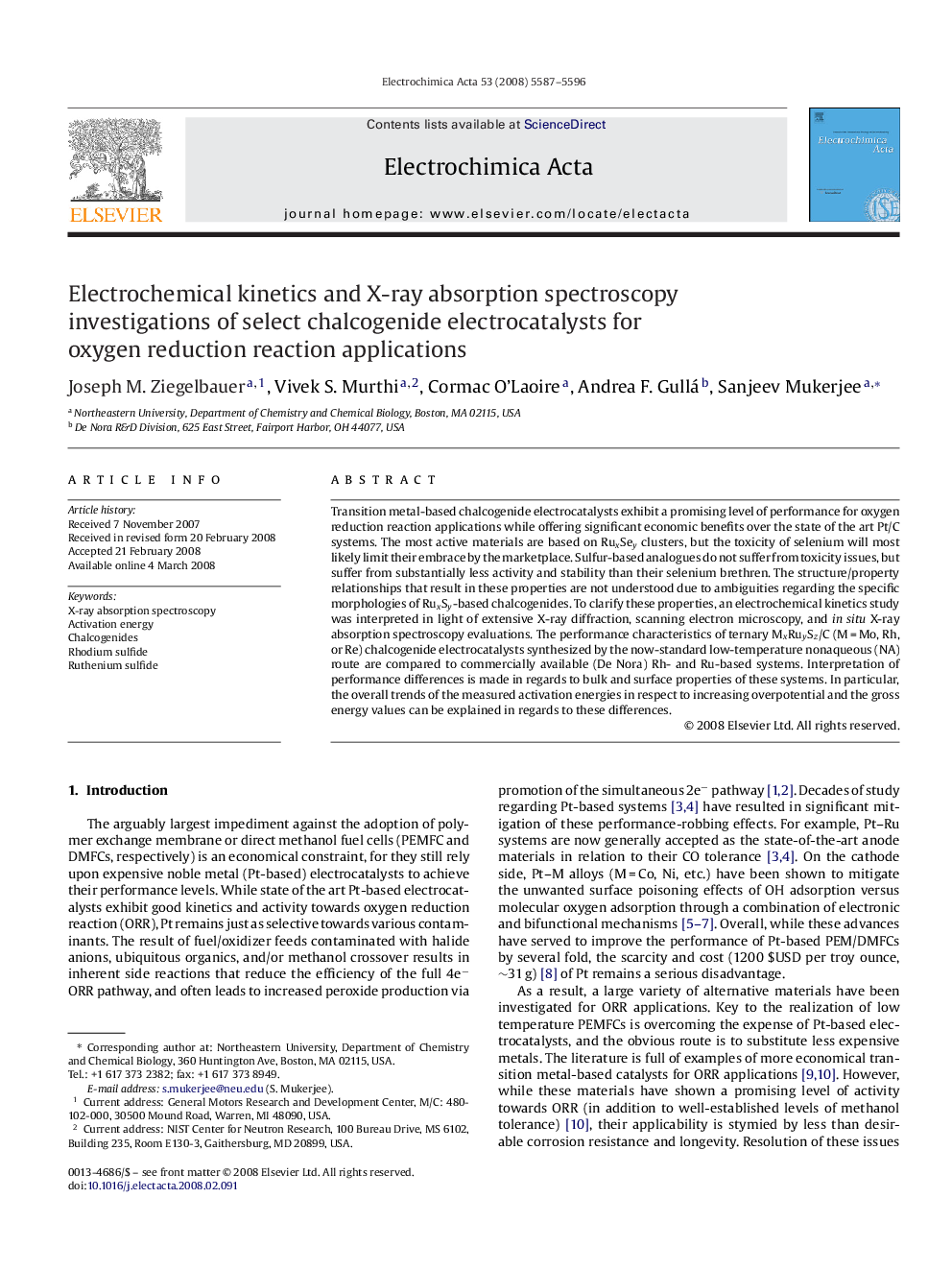| Article ID | Journal | Published Year | Pages | File Type |
|---|---|---|---|---|
| 195537 | Electrochimica Acta | 2008 | 10 Pages |
Transition metal-based chalcogenide electrocatalysts exhibit a promising level of performance for oxygen reduction reaction applications while offering significant economic benefits over the state of the art Pt/C systems. The most active materials are based on RuxSey clusters, but the toxicity of selenium will most likely limit their embrace by the marketplace. Sulfur-based analogues do not suffer from toxicity issues, but suffer from substantially less activity and stability than their selenium brethren. The structure/property relationships that result in these properties are not understood due to ambiguities regarding the specific morphologies of RuxSy-based chalcogenides. To clarify these properties, an electrochemical kinetics study was interpreted in light of extensive X-ray diffraction, scanning electron microscopy, and in situ X-ray absorption spectroscopy evaluations. The performance characteristics of ternary MxRuySz/C (M = Mo, Rh, or Re) chalcogenide electrocatalysts synthesized by the now-standard low-temperature nonaqueous (NA) route are compared to commercially available (De Nora) Rh- and Ru-based systems. Interpretation of performance differences is made in regards to bulk and surface properties of these systems. In particular, the overall trends of the measured activation energies in respect to increasing overpotential and the gross energy values can be explained in regards to these differences.
